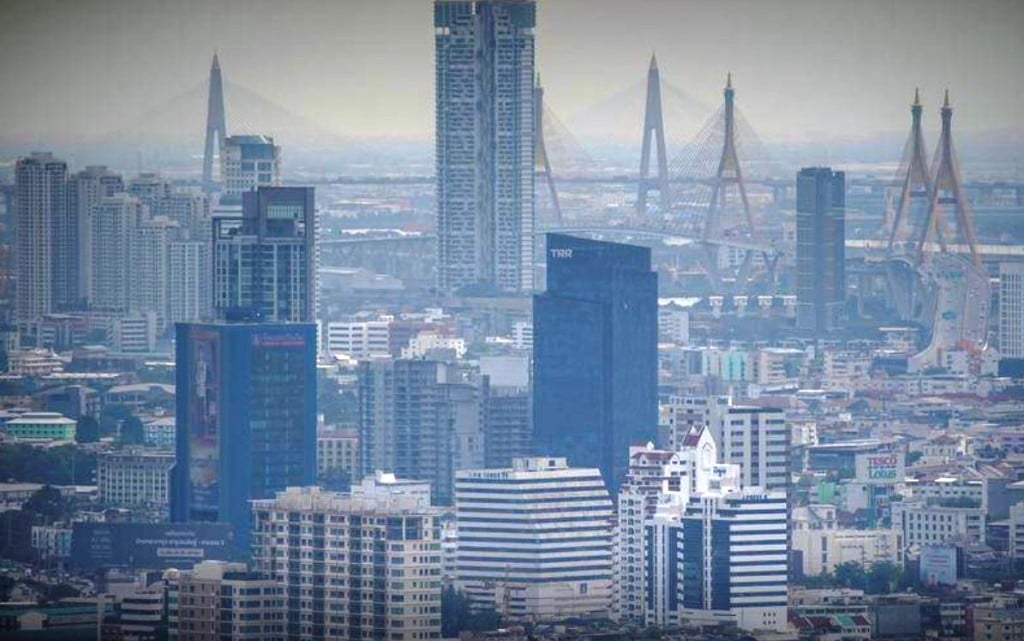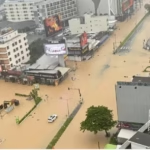CHIANG RAI – Bangkok’s air quality feels thick and heavy, a toxic shroud that blurs the city’s famous temples and leaves people struggling to breathe. As the dry season tightens, PM2.5 levels, the fine dust particles smaller than 2.5 micrometres that lodge deep in the lungs, have climbed to dangerous levels and pushed air quality into constant orange alerts.
On 13 November, the city’s daily average reached 32.4 micrograms per cubic metre (µg/m³). In districts like Bueng Kum and Lat Krabang, readings were close to 47 µg/m³, well above Thailand’s safety limit of 37.5 µg/m³. This is far more than a seasonal irritation; it is a public health crisis that has already cut short thousands of lives and drained billions of baht through lost work days and healthcare costs.
Among the skyscrapers, flyovers, and crowded street stalls, the city’s 10 million residents live with this reality every day. Children play in schoolyards with masks on, office workers hide inside air-filtered cafés, and older residents carefully plan when they step outside.
A simple walk can trigger coughing fits or asthma attacks. The World Health Organization links long-term exposure to PM2.5 to lung disease, strokes, heart attacks, and some cancers. In Thailand, this pollution is estimated to cause more than 32,000 premature deaths every year.
In the middle of this crisis, the government has released a new strategy. It is a detailed plan to cut PM2.5 pollution by 2026, aimed at factories, vehicles, and burning activities that constantly pollute the air. With political backing for a new Clean Air Act, the country has set itself a clear challenge: can strict rules, better technology, and real enforcement give the next generation a chance to breathe without fear?
Air Quality: PM2.5 and Bangkok’s Struggle to Breathe
Bangkok has battled dirty air for years, but 2025 has pushed the issue to a new level. From January to mid-February alone, hospitals and clinics recorded more than 66,000 pollution-related cases. Nearly one million protective masks were handed out to residents.
In March, parts of the city recorded PM2.5 levels as high as 64.4 µg/m³, placing those areas firmly in the orange zone, where health experts warn children, pregnant women, older people, and those with existing conditions to avoid outdoor activity.
Data from the Bangkok Metropolitan Administration (BMA) shows that all 50 districts have recorded days where air quality exceeded Thai standards. The city’s annual average now sits at 23 µg/m³, more than double the World Health Organization’s guideline of 10 µg/m³.
The human cost is visible in daily life. At Wichakorn School in Din Daeng, pupils wear masks as part of their uniform, and break times are often shortened because of the haze. UNICEF warns that 13.6 million children across Thailand face health risks from PM2.5, including asthma, reduced lung growth, and learning problems linked to poor air quality.
A 12-year-old girl, Nida, describes it as “like breathing through a dirty blanket”, her words dulled by the cloth over her face.
The wider impact is also stark. Tourists are starting to think twice before visiting what many now call the “smog capital”. Bookings drop when the air turns grey, harming hotels, restaurants, and street vendors. Chiang Mai’s experience in 2023, when it ranked as the most polluted city in the world during the haze season, hangs over the whole country as a warning.
Rapid urban growth has made things worse. Endless traffic jams leave diesel fumes hanging over main roads. Construction sites throw up clouds of dust. Older factories in and around the city release smoke that is often poorly filtered.
At the same time, Bangkok’s air is not polluted by local sources alone. Seasonal smoke from northern Thailand moves south each year, carried by changing winds. The haze from burning fields and forest fires in the north mixes with the city’s own emissions, turning Bangkok’s air quality into a toxic cocktail.
Northern Nightmares: Haze Over Chiang Mai and Chiang Rai
While Bangkok chokes on exhaust fumes and city dust, the north struggles with its own seasonal air quality disaster. Chiang Mai and Chiang Rai, usually known for cool mountains, temples, and lush forests, become trapped under thick smoke every dry season.
In 2025, PM2.5 levels in Chiang Mai rose above 100 µg/m³ during some haze episodes, a level health experts consider extremely hazardous. The smoke comes mostly from burning crop residue and forest fires, which fill valleys with a sharp, acrid smell.
Chiang Rai faces the same fate. From February to April, satellite images show a constant spread of hotspots, many from open burning in fields and hillsides. In rural areas, PM2.5 levels can hit 150 µg/m³ or more, according to data from the Geo-Informatics and Space Technology Development Agency (GISTDA).
The main driver is slash-and-burn farming. Farmers burn leftover corn and rice stalks to clear land quickly and cheaply. In Chiang Mai alone, about 140,000 rai of land is affected by this burning each year, leaving behind blackened ground and smoky skies.
Forest fires also rage through protected areas, with 1.8 million rai in the north burned last year. Cross-border burning in Myanmar and Laos adds to the problem, with studies suggesting that around 70% of maize-related hotspots are linked to areas across Thailand’s borders, often connected to Thai supply chains.
For people living there, the impact goes far beyond smoky sunsets. In Phayao, a teenager named Kamonchanok Ruenkham struggles with nosebleeds, chest tightness, and headaches that appear whenever the air turns bad. Schools close during severe haze days, disrupting lessons and exams. Outdoor work becomes painful and unsafe.
Tourism also suffers. Popular hiking routes, scenic viewpoints, and elephant sanctuaries are shrouded in thick haze, leading to trip cancellations and financial losses for local communities.
Farmers like Somchai in Chiang Rai describe the emotional toll. The smoke, he says, “chokes our temples and our lungs”, yet many feel trapped. Another farmer, Yai Praiwanaprasert, explains that burning is the cheapest way to clear fields, and machinery or alternative methods are often too costly or unavailable.
For families with thin profit margins, the choice is bleak: burn and survive financially, or stop burning and risk falling deeper into debt. The result is a cycle of smoke and hardship that repeats year after year.
Cross-Border Chokehold: Haze Without Passports
Thailand’s haze problem does not stop at its borders. Pollution from neighbouring countries flows in with the wind and raises PM2.5 levels across the north.
In 2025, more than 5,000 fire hotspots were recorded in Myanmar and around 3,000 in Laos, many linked to burning for maize plantations and shifting cultivation. The smoke drifts across borders and settles over Thai towns and cities.
Weather patterns linked to El Niño have made things worse this year. Longer dry spells and higher temperatures increase the risk of wildfires and field burning. In border provinces like Chiang Rai, PM2.5 levels rose by around 30% in some periods compared with recent years, largely because of fires outside Thailand.
ASEAN countries signed a regional haze agreement years ago, but progress on enforcement has been slow. Each government faces pressure from farmers and businesses, while cross-border contracts and supply chains for crops like maize blur responsibility. Thailand is left trying to clean up the air that it does not fully control.
In response, Thai agencies have tried to mix diplomacy with technology. The National Research Council of Thailand (NRCT) and the Agricultural Research Development Agency (ARDA) have organised meetings and workshops in Chiang Rai with delegates from Laos and Myanmar.
The aim is to create shared “no burn” zones, tracked by satellite imagery. Some border farmers are receiving subsidies to use balers and other machines to collect crop residue instead of setting it alight. GISTDA’s hotspot maps help teams from neighbouring countries coordinate patrols in high-risk areas.
Officials like NRCT’s Piyathida Thiranarong say the goal is cooperation rather than blame. The message is that all sides suffer from the smoke, and all can benefit from cleaner farming methods. Critics, however, argue that these efforts remain patchy. Without enforceable targets, penalties, and clear limits on burning, haze will continue to drift across borders each dry season.
Taming the Flames: Rethinking Agricultural Burning
At the core of Thailand’s PM2.5 crisis lies widespread burning of crop residue. Farmers across the country burn stubble from rice, sugarcane, and corn to clear land for the next planting. In the north, this practice contributes around 35% of PM2.5 emissions.
It is cheap, simple, and deeply rooted in local farming culture, but its impact on health and the environment is severe.
In 2025, Chiang Mai alone logged 1,124 burn points across more than 140,000 rai. Authorities know where burning occurs, but enforcing bans on small farmers is difficult. Fines are often low, and many farmers cannot afford to pay higher penalties. Local officials also face social pressure not to punish neighbours or relatives.
The national government is now trying stronger measures. A new order from the Ministry of Agriculture, known as Notification No. 2, bans open burning across the entire country during the most dangerous months.
In Chiang Mai, the governor has instructed district chiefs to strictly apply this ban from 1 March to 30 April. Farmers who break the rules can be excluded from subsidies for two years, while those who avoid burning receive incentives of 1,000 baht per rai and support to recycle crop residue.
Pilot schemes show what change could look like. In San Kamphaeng district, some 8,510 rai of land has been ploughed with residue left in the soil, creating natural compost instead of smoke. Local farmer Pinyo Puasriphan says the financial support has helped make the switch possible, even if it requires more time and labour.
Elsewhere, about 75,000 families have signed up to grow “eco-rice” on 500,000 rai, using methods that do not involve burning. The leftover biomass is turned into biochar, which factories can use as an energy source. In the sugar industry, an 8 billion baht programme rewards growers who deliver “fresh cane” that has not been burned, leading to a 20% drop in cane burning last season.
Environmental groups argue that these steps are helpful but incomplete. Activists like Rattanasiri Kittikongnapang from Greenpeace say that unless large animal feed producers and other buyers change their sourcing practices, farmers will still feel pressure to produce cheap crops as fast as possible.
Without changes in the wider market, they warn, policies risk treating symptoms rather than the root causes.
 Industrial and Vehicle Clean-Up: Tightening Emissions at the Source
Industrial and Vehicle Clean-Up: Tightening Emissions at the Source
In Bangkok, much of the PM2.5 comes from engines and industrial chimneys. Diesel vehicles, especially old buses, trucks, and pick-ups, are a major source of fine particles. Estimates suggest they contribute around 60% of the city’s PM2.5, with thick black exhaust clearly visible on many roads.
From 1 November 2025, BMA will apply stricter smoke limits for diesel engines. The allowed opacity level will drop to 20%. Vehicles that fail the test face temporary bans from use for at least 30 days, as well as fines.
This will hit older, pre-Euro 5 engines the hardest. At the national level, all new diesel vehicles have had to meet Euro 5 standards since January 2024, and this will rise to Euro 6 by 2026. These standards require cleaner fuel and advanced filters to cut both PM2.5 and nitrogen oxide emissions by about half.
Industrial sites are also under closer watch. Through a programme known as “Green List Plus”, factories with large boilers must install Continuous Emission Monitoring Systems (CEMS).
These devices constantly track pollutants like nitrogen oxides (NOx), sulphur dioxide (SO2), and total suspended particles (TSP). Draft regulations from the Ministry of Industry will tighten emission limits and increase inspections, especially in high-risk areas.
The Federation of Thai Industries has joined efforts by offering discounted oil changes and filter replacements as part of service campaigns during 2025 and 2026, to clean up around 300,000 vehicles. At the same time, Bangkok is planning a citywide Low Emission Zone covering all 50 districts by 2026. Highly polluting vehicles will face restrictions or extra charges, and some of the revenue will support electric buses and cleaner public transport.
All of these measures are due to gain stronger legal backing from the new Clean Air Bill. Approved in principle last year, this law will give local authorities clearer powers to monitor emissions, set local rules, and penalise both public and private polluters.
Looking to 2026: A Plan for Clearer Skies
The government’s main air quality plan brings many different measures together into a single 2026 target. Under Bangkok Governor Chadchart Sittipunt’s leadership, Bangkok has identified ten key actions to tackle PM2.5.
One feature is a work-from-home policy that will trigger during orange alert days. Around 300,000 people are expected to join these remote work schemes when air pollution peaks, which should take thousands of vehicles off the roads.
The city also plans to plant one million trees, with a focus on eastern districts that often sit downwind of major pollution sources. These green belts will help trap some dust and provide shade in heatwaves.
Pollution control zones in both Bangkok and northern provinces will tailor restrictions to local sources. In farming areas, this might mean stricter controls on burning and support for new farming practices. Around industrial estates, it could involve tougher stack emission limits and more surprise checks.
The upcoming Clean Air Act will require detailed action plans for each major source of PM2.5. This includes transport, industry, agriculture, waste burning, and transboundary pollution. Budgets for related projects are increasing, with around 140 million baht allocated for free public transport during severe haze days to encourage people to leave their cars at home.
Policy experts at TDRI have also called for a dedicated PM2.5 committee with real authority to oversee all agencies and avoid overlap or weak enforcement.
BMA adviser Pornprom Vikitsreth says the measure of success will be simple: fewer people getting sick and dying because of the air they breathe. Cleaner air would not only improve public health but also revive tourism, raise productivity, and ease pressure on hospitals.
Many remain cautious. Thailand has announced bold environmental plans before, only for enforcement to falter under political and economic pressure. Transboundary haze from neighbouring countries cannot be solved by Thailand alone. Farmers, truck owners, and factory operators often have limited resources to upgrade equipment or change practices.
Yet the trauma of 2025, with repeated school closures, face masks in every classroom, cancelled tours, and viral images of orange-brown skies, has shifted the public mood. Air quality is no longer seen as a distant environmental issue; it is a daily concern for parents, workers, and business owners.
As the rainy season approaches and the skies begin to clear, there is a narrow window for action. If Thailand follows through on its laws and plans, the country could begin to break the cycle of seasonal smog. Clean air is no longer a luxury; it is becoming a test of political will, public pressure, and how much value the country places on every breath its people take.




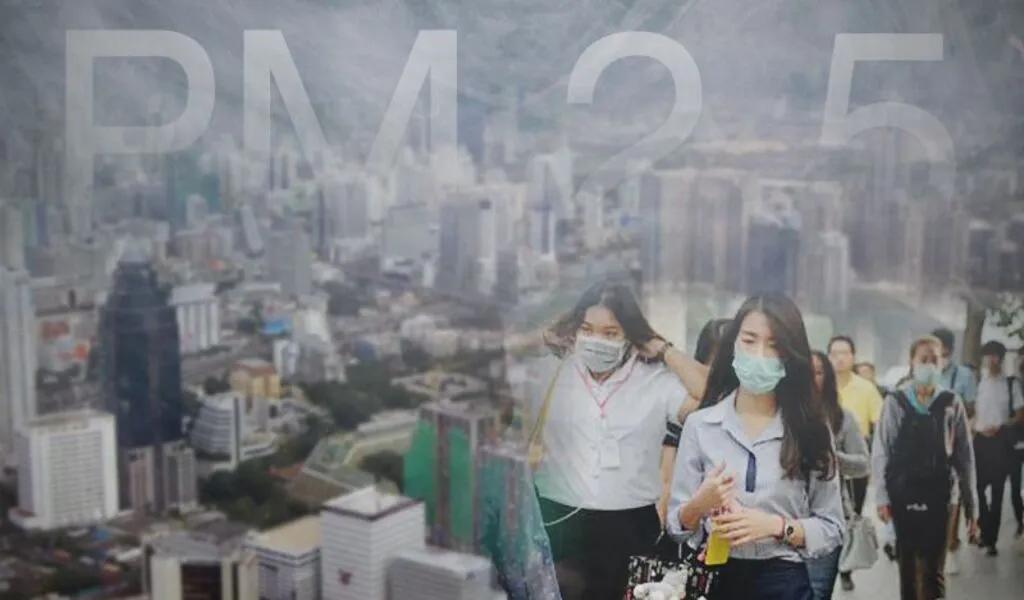
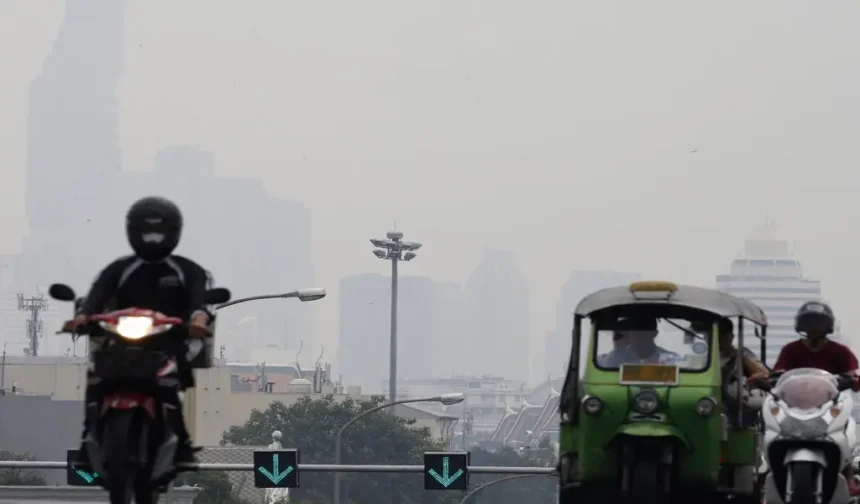
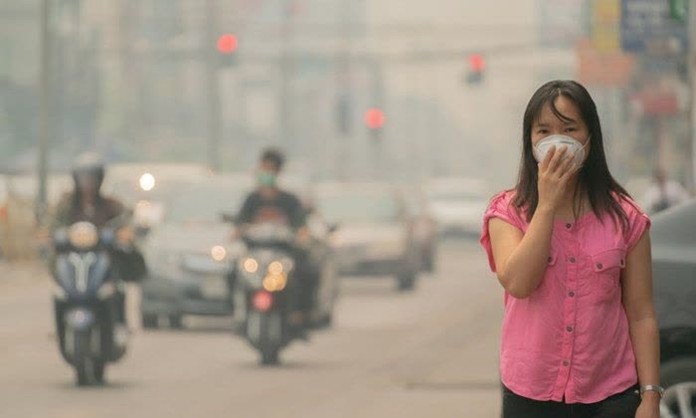
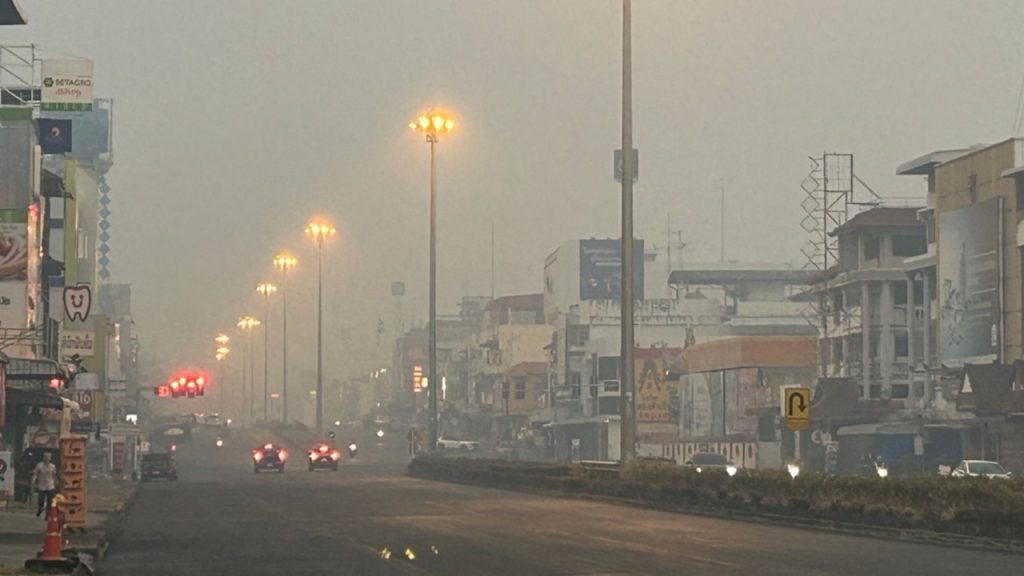
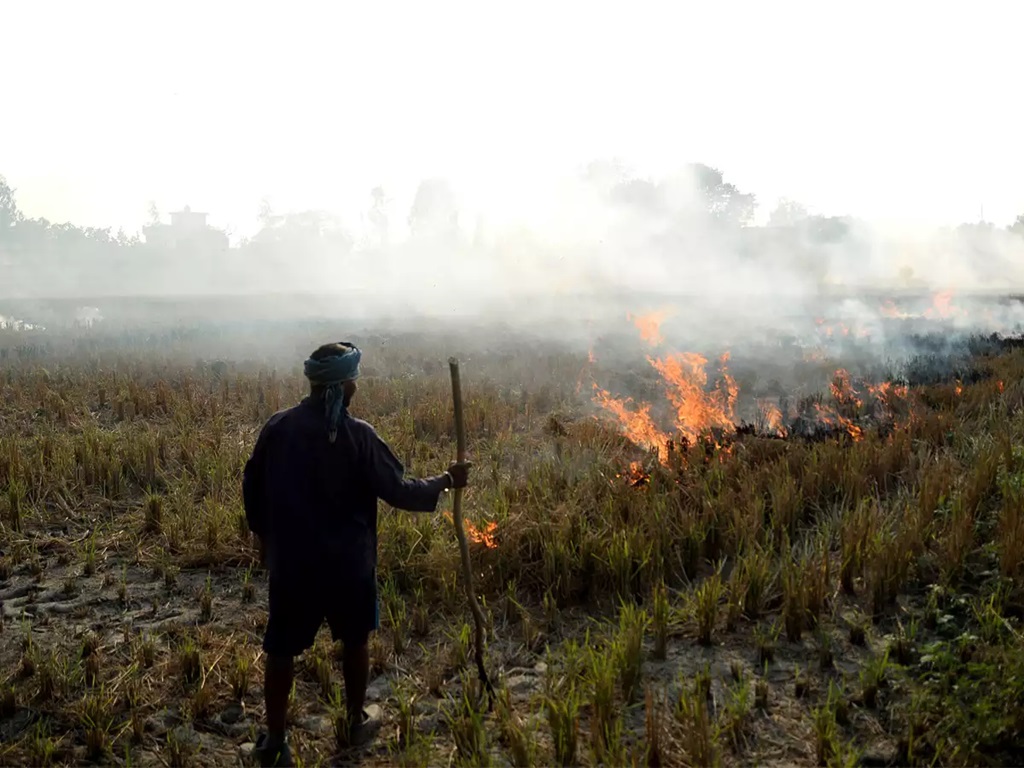
 Industrial and Vehicle Clean-Up: Tightening Emissions at the Source
Industrial and Vehicle Clean-Up: Tightening Emissions at the Source